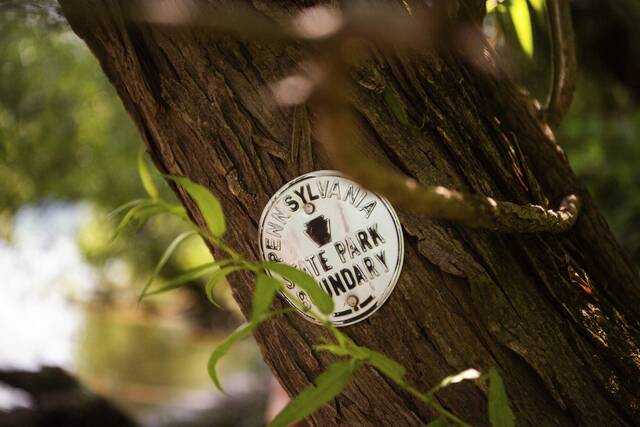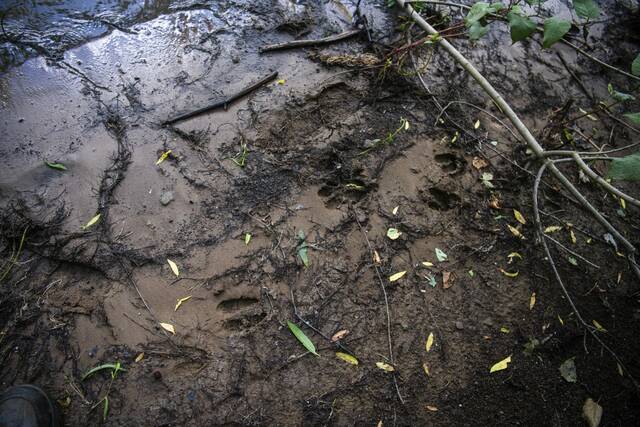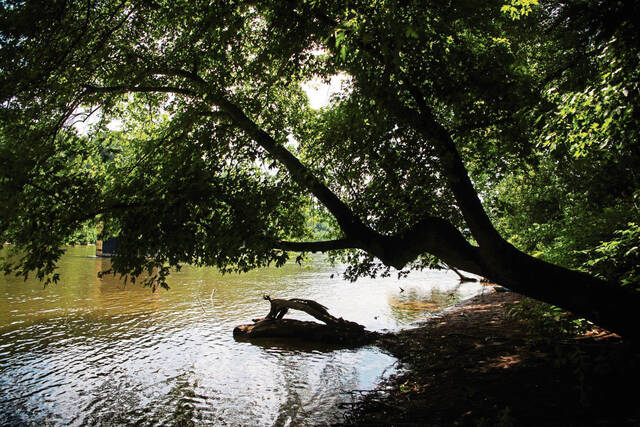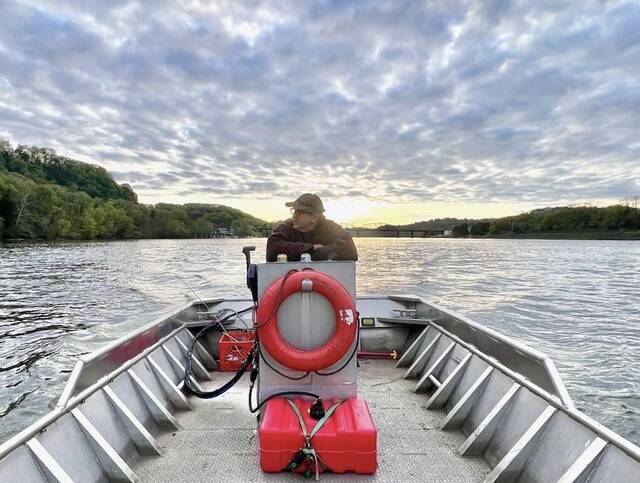'Pittsburgh's hidden gem': Allegheny Islands provide escape in the river
For Jack Lachendro, you don’t have to go far from Downtown Pittsburgh to feel like you’re “truly in nature.”
In fact, you need to head only 14 miles up the Allegheny River, said Lachendro, the environmental education specialist at Pennsylvania’s Department of Conservation and Natural Resources (DCNR).
There, visitors will discover the aptly named Fourteen-Mile Island, the largest chunk of the wild and oft-overlooked Allegheny Islands State Park.
Located between Plum and Harmar, the park sits beneath the Allegheny River Turnpike Bridge and is bisected by Allegheny River Lock and Dam No. 3.
Once a larger, single island, Fourteen-Mile Island was split by the lock and dam in the 1930s. The larger chunk of the island — just over a half-mile long by a quarter-mile wide — is downriver of the dam, and another part, about half the size, is upriver of the dam. That’s in addition to a smattering of other occasionally flooded leafy isles nearby.
Aside from some scattered tree markers, there’s not much on the islands to indicate they’re part of a state park. Visitors won’t find any trails, ranger stations or even a welcome sign.
The area, Lachendro said, is entirely undeveloped and accessible only by boat. But without a marina or any docks, kayaks tend to be the easiest way to access the islands.
Managed by the same DCNR office that oversees Point State Park in Pittsburgh, Lachendro said, the islands are “not manicured” and have been left as a display of Western Pennsylvania wilderness since they were designated as a park in 1980.
“Allegheny Islands is a great place to go if you want to get lost but still know where you are,” he said.
It’s that isolation, Lachendro said, that makes the park a desirable place to visit.
In addition to kayakers and fishermen, the secluded islands see their fair share of campers and even some hunters, he said. Those woodsmen prey on the deer that make the 150-yard swim to the park.
‘Refuge’ from civilization
Evan Clark said he spends most of his time on the water.
The captain of local river monitoring and advocacy group Three Rivers Waterkeeper, Clark said he knows just about every inch of shore in the Pittsburgh watershed.
Allegheny Islands, he said, is a spot where he always returns.
“To have access to (the park) really close to home is a gift,” Clark said.
Because the park sees limited visitors, the islands feel less human impact than other, more developed areas.
That means the park provides a “refuge” for plant and animal life along the river, he said.
While visiting the park’s sandy beaches, Clark frequently sees freshly hatched turtles or muskrats feeding on river mussels.
The islands also play host to other mammals, such as beaver and raccoons, as well as large aquatic birds including blue heron and great egret.
“My biggest fear would be a lot of impact on the island, which is a real refuge for wildlife and a good picture of what a wild island could and should like,” Clark said.
Brady Porter, a fish biologist at Duquesne University, calls the islands “very special.” They have served as the site for some of his research.
The professor, along with undergraduates, studied several species of darters, small freshwater fish related to perch and walleye, in riffles near the islands.
After studying the populations in the riffles and elsewhere in the state, Porter said, conservationists were able to take the darters off the state’s imperiled species list.
Again this June, Porter said, he was performing fish field surveys near the islands.
“I think they offer unique habitats that reflect some of what the rivers were like before all the impoundments (locks and dams) occurred,” he said.
Aside from the extensive fauna, Lachendro said the park is a haven for native flora including eastern sycamore, silver maple and eastern cottonwood trees. Lower to the ground, visitors can spot flowers such as Pennsylvania smartweed, square-stemmed monkeyflower and New York ironweed.
Like much of the surrounding region, however, the islands also struggle with invasive species.
Japanese knotweed grows densely throughout more than half of Fourteen-Mile Island, Lachendro said. Tree of heaven, a breeding ground for spotted lanternflies, also is common.
Though these species crowd out natives, Lachendro said the DCNR cannot simply remove them. The extensive root systems of the plants, native or not, protect the island from erosion, he said.
Though the islands remain rugged, visitors don’t have to look far to see man’s presence at the park.
As sightseers head farther up the island, turnpike traffic becomes more audible and garbage from overhead litterbugs more visible.
It’s something the DCNR attempts to combat, Lachendro said, with occasional cleanup trips. But he said the visible infrastructure does provide an intriguing view of the region as a whole.
“Allegheny Islands is a really interesting place to see where nature meets modern society and also meets human impact as well,” Lachendro said. “And I think that’s probably the coolest part about it. You can see how nature is supposed to be in Western Pennsylvania, but also see the human impact side of it, too.”
A unique place
According to Katie Craig, trail development coordinator at Friends of the Riverfront, the islands are the subject of some of the organization’s most frequent inquiries.
The nonprofit group builds and maintains more than 30 miles of multi-use trails along the region’s rivers, collectively known as the Three Rivers Heritage Trail.
The islands don’t have any of the group’s traditional walking and biking trails, but they do sit in the course of the nonprofit’s Three Rivers Water Trail.
The trail consists of a series of public boat launches that offer the community easy access to activities on what Craig calls a “recreational river.”
The closest launch to the park is Deer Creek launch in Harmar directly across from the privately owned Twelve-Mile Island.
In September, Craig said, her organization is planning a public event to paddle to the park.
“I think it’s a really unique experience and something I think is only going to get more popular,” she said.
Visitors to the islands should expect to haul out everything they haul in, following the principle of “leave no trace,” Lachendro said.
Because there is no access to drinking water at the park, he also advises parkgoers to carry plenty of their own to keep hydrated. For those seeking to camp, Lachendro asks that overnighters call the DCNR’s Pittsburgh office to let rangers know their plans.
But, he said, he hopes visitors enjoy the “surreal” experience of the wild island situated in an urban corridor.
“No matter where you live, there’s always a hidden gem somewhere not far away. You just have to look for it,” Lachendro said. “I would say Allegheny Islands is Pittsburgh’s hidden gem.”
James Engel is a TribLive staff writer. He can be reached at jengel@triblive.com
Remove the ads from your TribLIVE reading experience but still support the journalists who create the content with TribLIVE Ad-Free.







